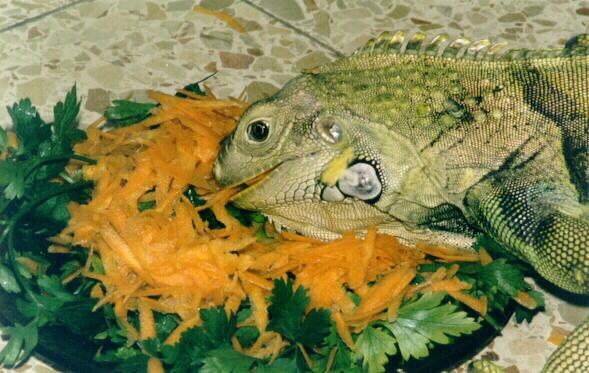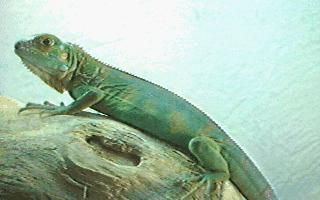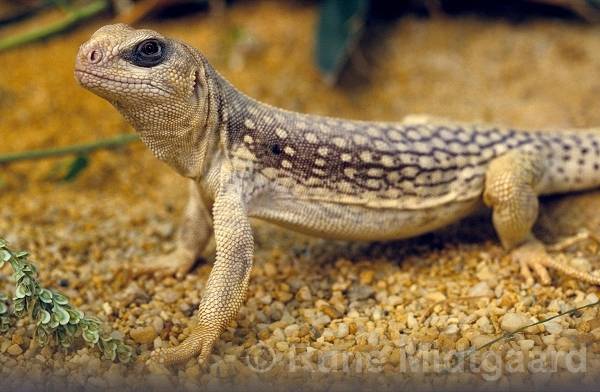 Which would be a better pet, Iguana or a Black and White Tegu?
Which would be a better pet, Iguana or a Black and White Tegu?
I am looking to get one of the two, Would like to know some more info on the two aswell.
 Getting an Iguana from Pennsylvania To Florida?
Getting an Iguana from Pennsylvania To Florida?
I have a HUUUGE dilema, I currently have a pet iguana who is just about 4 feet long and I need to transport him from my house in PA to my new house In florida… I called a few airlines and they won’t let me fly with him or even ship him. Nobody I know is willing to make the drive from PA to FL and I dont have a car that could make the trip. I was wondering what other possible options there are to have him transported to me.
 Can I legally marry my pet iguana?
Can I legally marry my pet iguana?
I’m having thoughts about hosting a wedding for my pet iguana and I. In my culture, iguanas are sacred and worshiped. Do I need to get a legal contract or document?
After all, he is pretty cute, he’s nice and has a good sense of humor!
Thank you.
 Why has my pet iguana stopped moving?
Why has my pet iguana stopped moving?
I feed my iguana whatever he likes, and he seems to like MnMs, so that’s what he usually eats. He absolutely loves Coke, and I drink it and I’m okay so i figured it is okay. A while ago he stopped moving, and he won’t eat or drink. Is he hibernating or is this a bad thing?
 Fat Iguana – The importance of proper nutrition for your iguana
Fat Iguana – The importance of proper nutrition for your iguana
Reptiles are of different kinds. Iguanas are just one of those that belong to the largest species of lard family. Iguanas are commonly seen in tropical rain forests, hot deserts and semi-aquatic places. From the forests of North America, Canada and South America to the desert places of South Africa and Madagascar and Island of Galapagos, you will be able to see different types of iguanas.
Iguanas can easily adapt to their environment. Like other reptiles, iguanas are also egg-laying animals and cold-blooded, meaning they cannot produce heat from their body.
Different Iguanas has its unique ability to be able to become accustomed to their habitat. They have their unique skills. Iguanas that dwell in high trees for instance, can jump off the ground without having injuries. In addition, iguanas in Galapagos Island, the Amblyrhynchus cristatus, known as the marine iguana are good swimmer.
The species of iguana differ in their color, size, behavior and their extinction status in the wild. Some iguanas have vivid and bright colors, and others are dull. Most iguanas grows quickly, a hundred times heavier as their normal size as a hatchling in just about 24-30 months. But this would happen if they are given proper care, enough food, and a place with good air circulation and lots of sunlight.
Most iguanas are herbivores while some are omnivore or carnivore depending on their habitat. Terrestrial dwellers are carnivore, they eat mealworms and wax worms while the forest and tree dwellers are herbivores, eats young leaves, flower buds and fruits.

Proper feeding of iguanas is important. Sufficient food intake might lead to bloating, and obesity. In addition, lack of proper diet may also lead to some diseases. Cases like these are very usual so you must be prepared whatever happened to your pet.
If your iguana is showing signs of NSHP or MBD you must bring your pet to a veterinarian. Your iguana is suffering from Nutritional Secondary Hyperparathyrodism or a metabolic bone disease. It doesn’t mean that your iguana is unhealthy if it is oversized or fat. Proper diet must be given. Provide your iguana with a high calcium and low phosphorus diet. Also, always make sure that your pet gets a proper sunlight.
If you’re iguana body seem to be bony and fat and jaws seem to be swollen, your iguana is in the critical stage of NHSP or MBD. This would lead to brittle bones that cause deformities and fractures.
To avoid this to happen give your iguana proper diet, exercise and should maintain a good weight but not becoming overweight. It is also necessary for a fat iguana to obtain the needed calcium or phosphorus ratio for a healthy bone.
How will you know if your Iguana is growing properly?
Hatchling usually measures for about two and a half to three and a half inches snout to vent. When it reaches and emerges from the egg it grows three-quarters of an inch a month for almost three months. The growth of young iguanas slows to a half when it is three months old with a snout to vent of five and three-quarter inches. Iguana reaches for about 9-10 inches stout to vent in just one year.
The growth of your iguana in this stage is very fast. During its twelve to fifteen months, it will grow for about triple of its original length. The growth length of iguana slows radically as the iguana continues to grow for next years. This time give your iguana a proper diet so that it would not get bigger and bigger.
 Facts about Iguanas – Things You Need To Know
Facts about Iguanas – Things You Need To Know
How you ever wondered what make up the body of an iguana? Now if you are interested in taking care of one iguana, you better take heed and take into account these vital facts about iguanas.
The term iguana is usually used to refer to all types of the members of the lizard family branded as the Iguanidae. As a general knowledge, the iguanas possess powerful but short limbs added up with their sharp claws. These claws are utilized for digging and climbing. Yes, they do love to climb that is why a set of branches for climbing must be set up in their tanks. The strong tails are used for their defense mechanism.
They whip it in the air especially when a predator corners them. Their tails are likewise used for swimming. The dewlap is a huge flap of skin that is contained on the sides of the body particularly in the areas of the throat of a male iguana is used to either intimidate a predator around or to impress another female iguana. The dewlap also functions in the regulation of their body temperature. Furthermore, the iguanas also contain some crest of very soft spines that lineup the middle part of their backs and necks. Relatively, the male iguanas have longer spines in contrast with the female iguanas.
By means of size, the male iguanas appear to be bigger. They have bigger heads and brighter body colors compared with the females. The body of the male iguana is much distinct during the time of the breeding season. Physically, both the male and the female iguanas contain twelve up to thirteen pores underneath the sides of their thighs. The pores are the ones which secrete the waxy substance which they use in marking their territories and identifying each of them. When the male iguanas mature, their own femoral pores come to develop some outward projections which they tend to use in the copulation strategy to take a grasp of the female iguana.

The skin of the iguana is filled with very minute scales. They are unable to change their skin colors just like the deed of the chameleons but when they get exposed to light, some parts of their skin become darker in color. The young iguanas appear to be colored in pale green alongside with black ringed tails. As they grow mature, their colors turn out to be more earthly colored which are usually darker especially in their bodies and tails.
Back in their natural habitats, the iguanas appear to be wary since they always feel that danger is beside them. They could always be spotted running and hiding. They make full use of their accurate vision, keen sense of hearing and smell so that they could better ensure their own survival. They may appear to be clumsy at times but then the iguanas are great swimmers and tree climbers. They usually bask in the morning atop the trees and they can jump into the water anytime they sense danger.
Mating fro the iguanas occur in the months of January to February. The female iguana tend to get pregnant for two months and then by the time laying the eggs come, the female iguana digs in the soil or sand to deposit the eggs which range from 25 to 40 eggs. After two weeks, the hatchlings are ready to come out into the world.
The iguanas could be great pets provided that you know how to take care of them. They are inherently high maintenance. But then everything will pay off if you just learn how to care for your pet properly.
 How do you take care of a Iguana?
How do you take care of a Iguana?
I want a pet Iguana, and I was wondering what do they eat. And I plan on getting one. And what else should I know about Iguana’s. Also if i get one she I get a baby Iguana?. Or and Adult Iguana. Thank you.
 How hard is it to raise a free roaming pet iguana?
How hard is it to raise a free roaming pet iguana?
also, Ive heard you can potty train them, how do you do this?
 Desert Iguanas – Some Facts about the Desert Iguana
Desert Iguanas – Some Facts about the Desert Iguana
1) Description – the desert iguana (Dipsosaurus Dorsalis) is 10 to 16 inches long when fully grown. It has a large, round body with a long tail. In fact, the tail of the desert iguana is longer than its body. Described as “blunt-headed”, desert iguanas have very distinct coloring patterns. The head of the desert iguana is colored brown. This coloration diffuses into reddish brown pattern which could be described as looking like a net.
The desert iguana has gray spots on the trunk and neck. Desert iguanas also have dark spots on their white or gray tails. A row of dorsal scales are located down the center of the back of the desert iguana.
2) Habitat – As can be gleamed from its common name, the desert iguana lives in arid desert regions. Desert iguanas are commonly found in the Sonoran and Mojave deserts founding the southwest of the United States. They are also located in Northwestern Mexico and some islands on the Gulf of California. In the southern part of its habitat, the desert iguana usually lives in arid subtropical areas and deciduous forests.
In the desert, these animals can usually be found around the range of the creosote bush. The desert iguana makes use of the creosote bush for shelter and for food. There are also several cases of desert iguanas moving into the abandoned lairs of kangaroo rats.
They are hardy animals, often active even when other lizards have already retreated from the heat. They are also inclined to burrow into the soil near creosote bushes.

3) Food – desert iguanas are primarily herbivorous. This means that they are inclined to eat plant matter. They will eat bud, leaves and fruits of many types of perennial or annual plants that are found in their habitats. They are especially attracted to the yellow flowers of the creosote plant.
4) Behavior – as said before, desert iguanas remain active even during intense heat. However, if the heat proves too much, a desert iguana will climb bushes in order to seek cooler temperatures. They are very quick and they can often be seen crossing roads just before an oncoming car. When a desert iguana runs at these speeds, it often does so on two legs. It folds its front legs near its body and uses its powerful hind legs to propel it forward.
5) Natural enemies –like other animals, desert iguanas have natural enemies. In fact, even before they hatch, there area lot of animals which would eat iguana eggs. A mature desert iguana also has different birds of prey as its natural enemy.
Other common enemies of the desert iguana are small animals such as rats, weasels, foxes and snakes. Of course, man is also one common enemy of the iguana. Many a desert iguana has fallen prey to the automobile. These desert iguanas are now referred to as “roadkill” by the human beings who drive these machines carelessly and without regard for the lives of small animals.
These are just some facts about desert iguanas. As you can see, there are many things about them that people need to know. Hopefully, these facts have opened your eyes and have shown you that desert iguanas are so much more than stupid medium sized lizards. By learning all you can about desert iguanas, you will soon be able to fully appreciate their beauty.
 how can i tell a male iguana from a female?
how can i tell a male iguana from a female?
i have a juvinile iguana and i was wondering how i can tell the sex of my pet iguana?